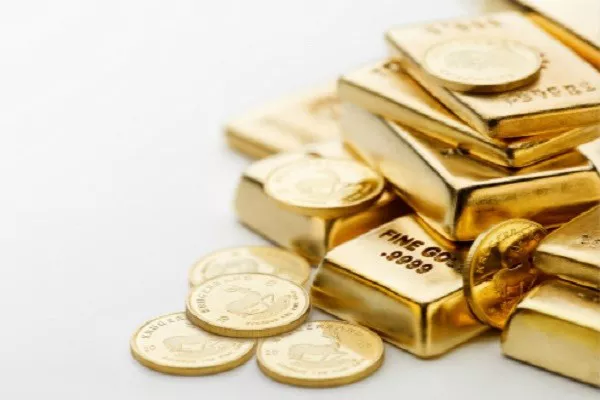Gold has long been regarded as a safe-haven asset and a store of value. Throughout history, it has weathered economic crises, political instability, and currency fluctuations. As investors seek refuge from volatility and uncertainty, they often turn to this precious metal. In recent years, gold has experienced significant price fluctuations, prompting investors and analysts to wonder: How high can gold go? This article delves into various factors influencing the price of gold and explores the potential limits of its ascent.
Historical Perspective
To understand how high gold can go, it’s essential to consider its historical performance. Gold has witnessed remarkable price increases over the decades, often during times of economic turmoil. For example, during the financial crisis of 2008, gold reached an all-time high of over $1,900 per ounce in 2011, as investors sought refuge from the uncertainty of traditional financial markets. This historical precedent suggests that gold can reach new heights during times of crisis and uncertainty.
Supply and Demand Dynamics
One of the fundamental factors influencing the price of gold is the balance between supply and demand. Gold is a finite resource, and its mining production is relatively stable, with only modest increases over the years. On the other hand, demand for gold varies significantly based on economic conditions, investor sentiment, and global events.
Jewelry Demand: Jewelry accounts for a substantial portion of gold demand, particularly in countries with strong cultural ties to gold ornaments, like India and China. As incomes rise in these regions, so does demand for gold jewelry.
Industrial Use: Gold has various industrial applications, including in electronics and dentistry. Any advancements or changes in these industries can impact gold demand.
Central Bank Purchases: Central banks of various nations often buy and hold gold as part of their foreign exchange reserves. These purchases can create substantial demand for gold.
Investor Sentiment: In times of economic uncertainty or inflation concerns, investors flock to gold as a hedge against currency devaluation and economic instability. This increased demand can drive prices higher.
Geopolitical Events: Political tensions, conflicts, and economic crises can lead to a surge in demand for gold as a safe-haven asset.
Considering these factors, it’s evident that gold demand can increase significantly in various scenarios, potentially pushing prices to new highs.
Inflation and Currency Devaluation
Gold is often seen as a hedge against inflation and currency devaluation. When inflation erodes the purchasing power of fiat currencies, investors turn to tangible assets like gold to preserve their wealth. Similarly, in times of currency devaluation or uncertainty, gold gains appeal as a safe-haven asset. As central banks around the world engage in expansive monetary policies, printing money to stimulate economic growth, concerns about currency devaluation and inflation remain prominent. This dynamic can contribute to gold’s upward trajectory.
Interest Rates and Opportunity Cost
The opportunity cost of holding gold, which doesn’t yield any interest or dividends, becomes more attractive when interest rates are low. Low-interest rates make alternative investments less appealing, prompting investors to allocate more of their portfolios to gold. Conversely, when interest rates rise, the opportunity cost of holding gold increases, potentially dampening demand and limiting its price growth.
Global Economic Conditions
The health of the global economy plays a crucial role in determining how high gold can go. Economic instability, recessions, and financial crises tend to drive investors towards gold, as it is perceived as a safe store of value. However, during periods of strong economic growth and stability, demand for gold may wane, limiting its price growth potential.
Technological Advancements
Advancements in technology can affect gold prices both positively and negatively. On the one hand, new industrial applications for gold can increase demand, driving prices higher. On the other hand, technological innovations in mining and exploration can lead to increased supply, potentially putting downward pressure on prices. As technology continues to evolve, it’s essential to consider its impact on the supply-demand dynamics of the gold market.
Geopolitical Uncertainty
Geopolitical events, such as trade tensions, conflicts, and diplomatic disputes, can have a significant impact on gold prices. These events often create uncertainty in financial markets, prompting investors to seek the safety of gold. The potential for unexpected geopolitical developments underscores the importance of gold as a hedge against uncertainty, contributing to its potential for price growth.
Environmental and Ethical Concerns
Environmental and ethical considerations are increasingly influencing investment decisions. In recent years, there has been a growing interest in sustainable and responsible investments. Gold mining, like any extractive industry, can have significant environmental and social impacts. Concerns about these impacts may lead to increased scrutiny of the gold mining industry and potentially limit the supply of responsibly sourced gold. This could contribute to higher prices for gold that meets ethical and environmental standards.
Conclusion
While predicting the precise future price of gold remains challenging, several factors suggest that there is potential for further price growth. Gold’s historical performance, supply and demand dynamics, inflation and currency devaluation concerns, and geopolitical uncertainty all point towards a bright future for this precious metal. However, it’s crucial to recognize that gold prices are subject to fluctuations and influenced by a complex interplay of factors.
Investors should approach gold as a part of a diversified portfolio, taking into consideration their financial goals, risk tolerance, and investment horizon. The allure of gold as a safe-haven asset remains strong, and its role in wealth preservation is likely to persist in the years to come. While the ceiling for gold’s price is uncertain, its reputation as a store of value suggests that it will continue to shine in uncertain times.


